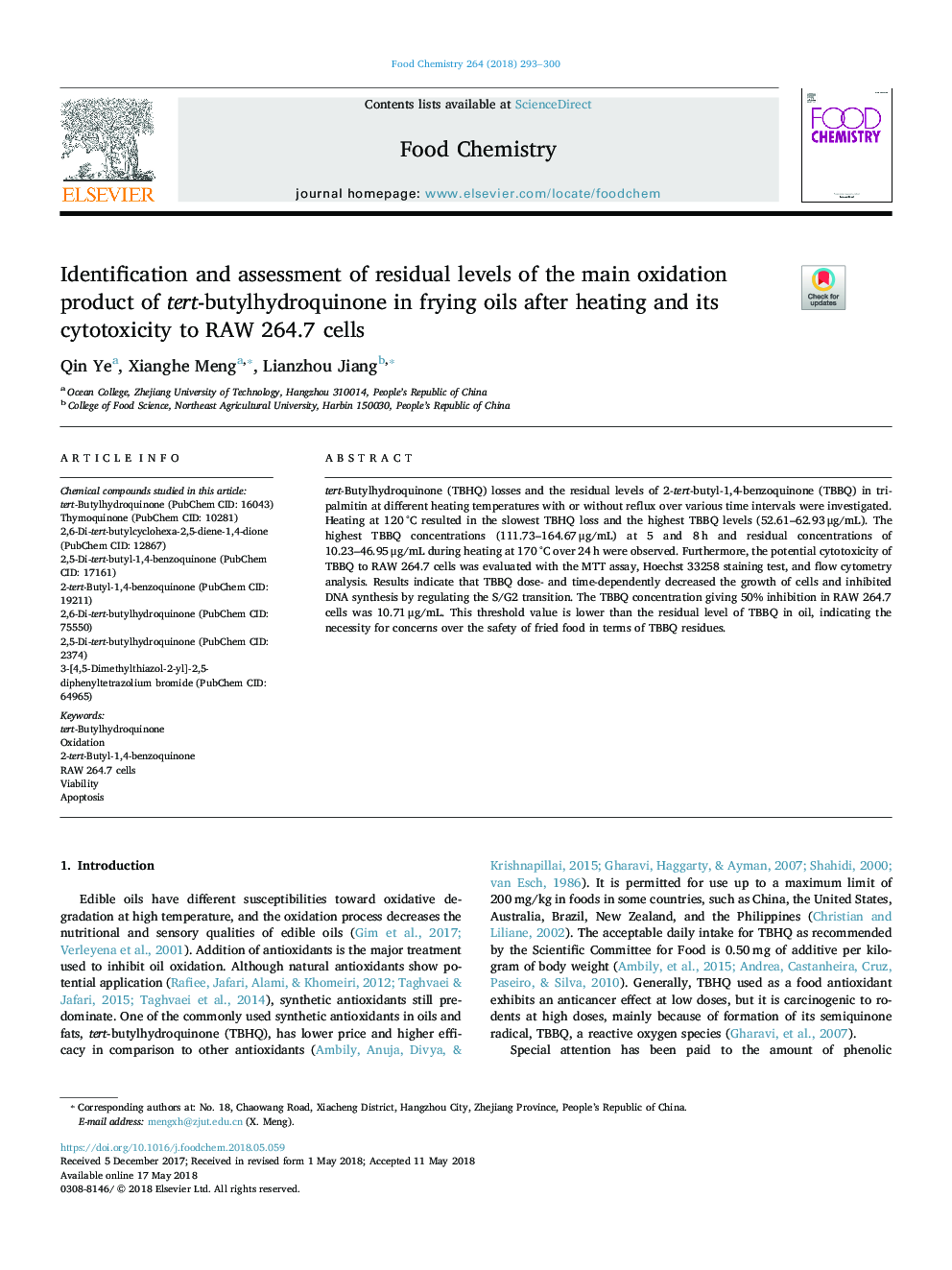| Article ID | Journal | Published Year | Pages | File Type |
|---|---|---|---|---|
| 7584734 | Food Chemistry | 2018 | 8 Pages |
Abstract
tert-Butylhydroquinone (TBHQ) losses and the residual levels of 2-tert-butyl-1,4-benzoquinone (TBBQ) in tripalmitin at different heating temperatures with or without reflux over various time intervals were investigated. Heating at 120â¯Â°C resulted in the slowest TBHQ loss and the highest TBBQ levels (52.61-62.93â¯Î¼g/mL). The highest TBBQ concentrations (111.73-164.67â¯Î¼g/mL) at 5 and 8â¯h and residual concentrations of 10.23-46.95â¯Î¼g/mL during heating at 170â¯Â°C over 24â¯h were observed. Furthermore, the potential cytotoxicity of TBBQ to RAW 264.7 cells was evaluated with the MTT assay, Hoechst 33258 staining test, and flow cytometry analysis. Results indicate that TBBQ dose- and time-dependently decreased the growth of cells and inhibited DNA synthesis by regulating the S/G2 transition. The TBBQ concentration giving 50% inhibition in RAW 264.7 cells was 10.71â¯Î¼g/mL. This threshold value is lower than the residual level of TBBQ in oil, indicating the necessity for concerns over the safety of fried food in terms of TBBQ residues.
Keywords
Related Topics
Physical Sciences and Engineering
Chemistry
Analytical Chemistry
Authors
Qin Ye, Xianghe Meng, Lianzhou Jiang,
